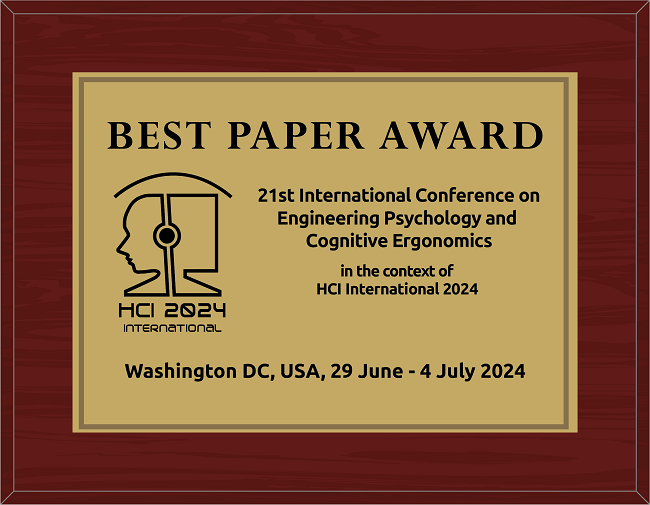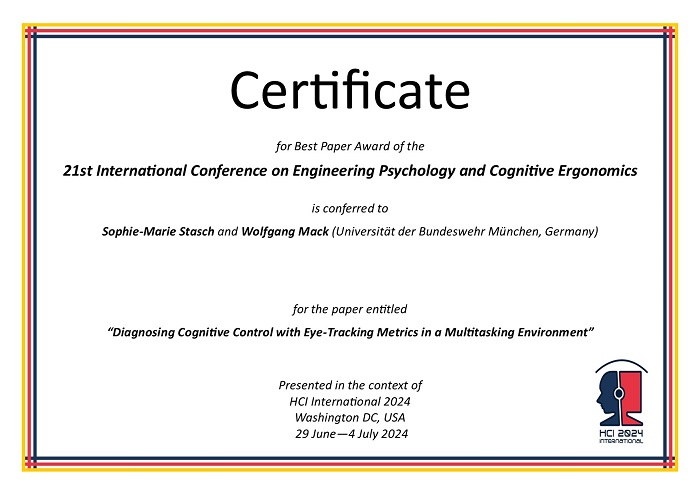
The Best Paper Award of the 21st International Conference on Engineering Psychology and Cognitive Ergonomics
has been conferred to
Sophie-Marie Stasch and Wolfgang Mack (Universität der Bundeswehr München, Germany)
for the paper entitled
"Diagnosing Cognitive Control with Eye-Tracking Metrics in a Multitasking Environment"

Sophie-Marie Stasch
(presenter)

Best Paper Award for the 21st International Conference on Engineering Psychology and Cognitive Ergonomics, in the context of HCI International 2024, Washington DC, USA, 29 June - 4 July 2024

Certificate for Best Paper Award of 21st International Conference on Engineering Psychology and Cognitive Ergonomics presented in the context of HCI International 2024, Washington DC, USA, 29 June - 4 July 2024
Paper Abstract
"In multitasking environments, such as military flight missions, effective task prioritization is crucial to ensure overall flight safety. Cognitive control plays a vital role in this process, balancing stability for goal pursuit and flexibility for reacting to unexpected events. This can be challenging, since cognitive stability is also associated with more difficult task switching and cognitive flexibility is linked to distractedness. This study explores the use of eye-tracking metrics to diagnose the cognitive control state of operators within an adaptive assistance system in a multitasking environment. Three studies, involving 144 participants, manipulated control modes using a task prioritization strategy in a low-fidelity flight simulator. Eye movement data was recorded at 1000 Hz. The study employed eight supervised machine learning algorithms for binary classification, namely random forest, k-nearest neighbors, support vector machines, naïve bayes, decision trees, logistic regression, linear discriminant analysis, and XGBoost. The average accuracy of 0.89 demonstrates that the recognition of the cognitive control mode via eye-tracking is feasible. The findings suggest the potential integration of eye-tracking metrics into real-time user state diagnosis for adaptive assistance systems, especially in safety-critical human-machine systems. However, further research is needed to validate the classifier in more realistic flight environments with an expert sample."
The full paper is available through SpringerLink, provided that you have proper access rights.